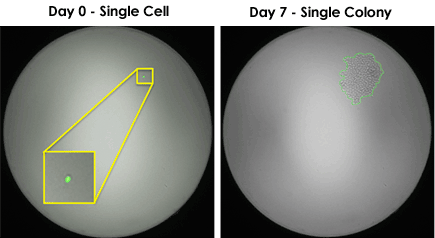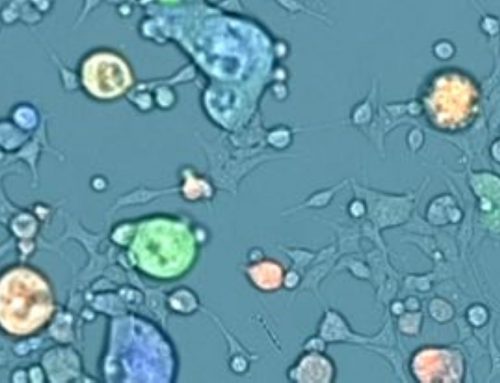Over the last few years, single cell sorting has gained importance not only because it is an essential technique for day-to-day lab research, but also due to the regulatory process for new drugs.
Single cell sorting is important
The FDA identifies clonality as one of the most crucial steps in guaranteeing cell line quality and safety. However, the FDA does not currently specify what percentage of clonality is acceptable, nor do they specify which single cell sorting methods are recommended. As more and more pharmaceutical companies push drugs through clinical trials, FDA regulations and single cell sorting are of increasing importance.
The FDA requires proof of pure clonal isolation
Historically, when growing a colony of cells from a single progenitor cell, there was no easy way to differentiate if the colony originated from that single progenitor. Utilizing manual counting, you have to be extremely careful and fastidious in your single cell verification. Typically, you would need to perform serial dilutions until you finally reach the point in which, statistically, one cell is present, and then confirm that each cell is identical and comes from the same progenitor. Current technologies can assist you in sorting colonies into single cells, however even after the cells are sorted, FDA regulations require documented “proof” of pure clonal isolation. This is where the imaging power of the Celigo Image Cytometer comes in.
Celigo provides image-based proof of single-cell clonality
With the help of Nexcelom technology, this challenge becomes much simpler. In GEN’s article “Single-Cell Cloning Remains a Challenge”, Nexcelom’s Product Manager, Tim Smith, states that
“Single-cell cloning is becoming much more popular due to regulations, and people have seen the benefits of the Celigo. With the technology available now, it’s a lot easier. You have an image in two minutes where before you had to go through genetic characterization, allowing much higher throughput.”
Our Celigo Image Cytometer allows you to image and analyze an entire 96-well plate in two minutes. Each individual well is captured by a series of 16 images and then stitched together.
From day one, Nexcelom instruments provide you with documented, image-based proof of single-cell clonality. Celigo provides fast, high-throughput analysis and imaging with the ability to document a sample over time with greater ease saving you time, and headaches.







Leave A Comment